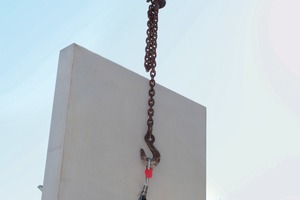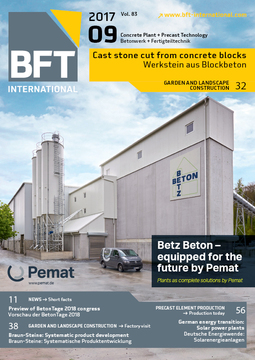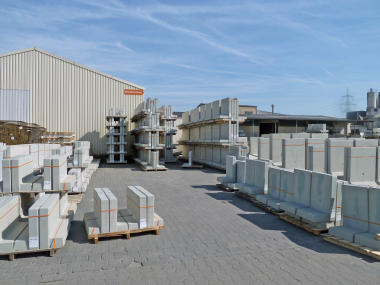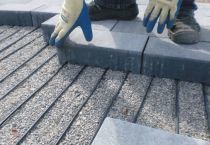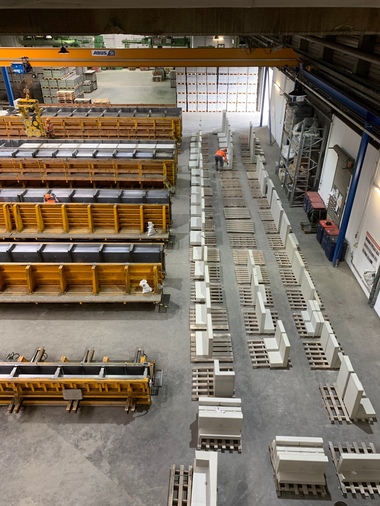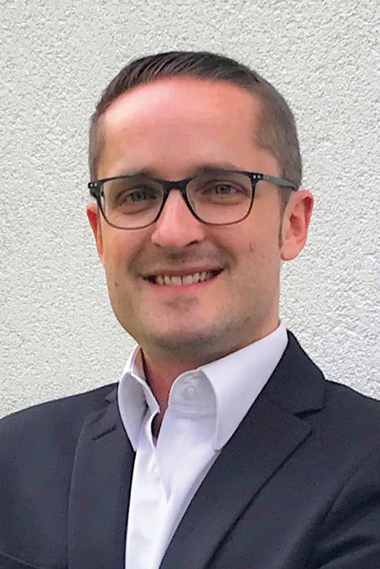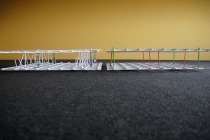Patented manufacturing process for diaphragm walls
Owing to a newly patented production process, large diaphragm walls from the company Lithonplus can be manufactured smooth-formed all around and are notably easier to transport, lift, and mount. The angular concrete elements from the L-Tec System, featuring architectural concrete quality, are considered a true innovation in the industry.
The new diaphragm wall is the successful result of long ongoing-development work at the company Lithonplus Steinmanufaktur. “It took five years to develop the innovative production system for optimized manufacture of high-quality concrete elements,” confirms Gregory Trautmann from his experience. He, with Roman Lentz and Wilfried Polle, is one of the three managing directors of Lithonplus Steinmanufaktur. Their development began with the idea of developing a concept for automated manufacture of diaphragm walls. It resulted from their conviction that there must be a more efficient, alternative solution to manual manufacture of such large concrete elements.
Demolding without any tapering made possible
The expertise and the visionary imagination of various players was essential for the development of the necessary production system. The developers integrated in particular the wishes and requirements of planners and processors in relation to the possibilities of application, design, and optimized processing at the construction site. Their in-house concrete experts, in collaboration with the concrete laboratory, adapted the high-quality formulation to the requirements of various sites of application and production flows. The self-compacting concrete used offers high resistance to frost and freeze-thaw with de-icing salt, and can therefore also be directly applied on roads where salt is used in winter.
At first, together with a number of engineering firms, and under strictest conditions of confidentiality, the development of a fully automated circulation system with curing chamber was meticulously worked over until finally a prototype made it possible to manufacture several elements simultaneously without problem. Now that the prototype has been put into operation, work can take place in two shifts and later also in multiple-shift work: reinforcement can be placed in two adjacent forms and subsequently cast with self-compacting concrete. The curing process is accelerated in an annexed curing chamber. In this way, the elements can be demolded within only a few hours.
The greatest challenges faced by the machine builders was to design and construct a production process, now patented, that enables demolding without the slightest tapering and that leaves no marks or traces on the architectural concrete surface.
Significantly more ease of handling
Thoughts about improving the design of the concrete elements, as well as optimizing handling at the construction site, were implemented over the entire course of the innovation process. The heavy parts – with their centers of gravity above or below the points of suspension – previously swung back and forth while being moved to their installation points. Now, determination of the center of gravity and of the anchorage during transport and mounting result in significantly more convenient handling, which benefits both safety at work and the speed and precision of installation.
Because the development of an innovation project from the initial vision to implementation ties up manpower, one of the three managing directors at Lithonplus, Wilfried Polle, involved himself intensively with the project. Together with Jürgen Rust, who provided the CAD drawings for the prototype of the production line, and who later took over site management, Wilfried Polle with support from Rust thought through a great variety of steps and brought them to implementation with the support of out-of-house engineers and machine builders. The concrete was optimized in-house.

